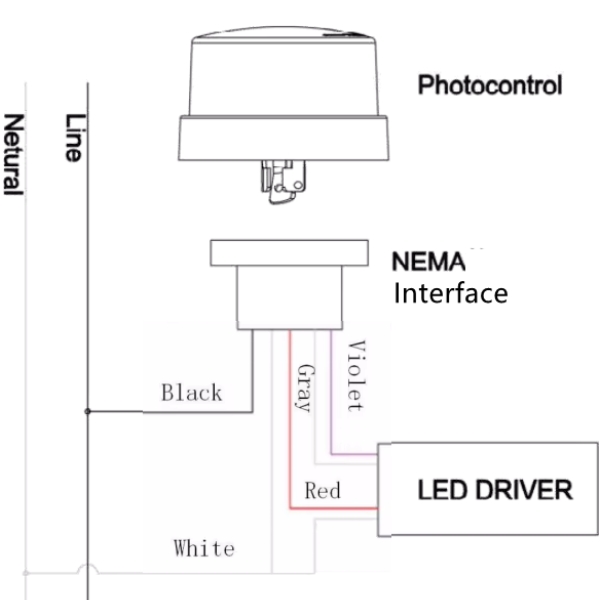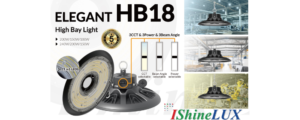The Complete Guide to LED Street Lights with Photocell Sensors

Cities lose money every year from lights that run too long. One small sensor could fix that—if you use it the right way.
LED street lights with photocells1 turn on and off based on how bright or dark it is outside. They save power and help keep streets safe without needing people to control them.
If you buy or manage lighting for roads, parks, or cities, this guide will help you avoid costly mistakes.
What Are LED Street Lights with Photocells and How Do They Work?

Old street lights use timers that turn on at fixed times. But sunset and sunrise change every day. That's why photocells are important.
Photocells are sensors that feel the light around them. When it gets dark, they turn the light on. When it's bright again, they turn it off. They work best with LED street lights.
How Photocells Work with LED Lights
- When it gets dark → resistance in sensor rises → light turns ON
- When it gets bright → resistance drops → light turns OFF
This makes lights adjust to real-world conditions instead of fixed times.
Comparison of Control Types
| Control Type | How It Works | Good Things | Problems |
|---|---|---|---|
| Manual | You flip a switch | Very simple | Needs a person every time |
| Timer | Set time to turn on/off | Works for routine | Doesn’t adapt to weather |
| Photocell | Checks outside light | Fully automatic | Needs correct setup |
My View:
I used to think timers were good enough—until one foggy morning when street lights stayed off too long and caused an accident. Since then, I trust photocells. They work with nature, not a clock.
What Are the Different Control Methods and Why Mixed Mode Wins?
Lighting should not just work. It should work when needed, with the right method.
LED street lights with photocells can work in three ways: by timer, by daylight, or both together (mixed). Mixed mode gives the most stable result.
Three Control Types
Timer Control
- Set start and stop times
- Good in places with stable day/night times
- Not reliable in bad weather
Daylight Sensor Control
- Turns on/off based on light levels
- More natural
- Can get confused by car lights or strong reflections
Mixed Mode
- Uses both daylight and time
- Turns on at dark or set time—whichever happens first
- Reliable and smart
| Mode | Can Adjust? | Saves Power | Easy to Confuse? |
|---|---|---|---|
| Timer | No | Medium | No |
| Daylight | Somewhat | High | Yes |
| Mixed Mode | Yes | Very High | No |
My View:
Our clients in Europe and the Middle East often choose mixed mode. It gives them stable light with fewer problems. Less risk, more savings.
What Are the Different Types and Standards of Photocells?
Not all photocells are the same. Choosing the wrong type can lead to more false triggers or shorter life span.
Photocells come in several types—LDR, phototransistor, and smart sensor modules. Each has different performance and cost. For public projects, make sure they also meet safety and certification standards.
Types of Photocells and Their Features
| Type | Pros | Cons | Use Case |
|---|---|---|---|
| LDR (basic sensor) | Low cost, easy to install | Slow response, can be unstable | Small lots or rural roads |
| Phototransistor | Fast, reliable, good precision | Higher cost | Urban areas, highways |
| Smart sensor module | Support dimming, remote control | Needs system integration | Smart city, IoT-based projects |
Global Certifications to Check
| Region | Required Standards | Notes |
|---|---|---|
| Europe | CE, ENEC, RoHS | Check EN61547 for EMC compliance |
| USA | UL, FCC | UL773 is key for photocells |
| Middle East | GCC Conformity (SASO, ESMA) | Many cities follow IEC guidelines |
| Australia | RCM | Ensure AS/NZS 4417 compatibility |
My View:
I once helped a client win a government project simply because we provided pre-certified photocells. It saved them weeks in approval delays. Certification is not extra—it’s essential.
How Do Photocells Really Work Technically?

What’s inside that small black sensor on top of the street light?
Photocells are made of special materials that change when light hits them. The light changes the electric signal, which tells the light when to turn on or off.
What’s Inside a Photocell
- LDR (Light Dependent Resistor): resistance drops when light comes in
- Phototransistor: faster and better for outdoor or big projects
- Voltage divider: turns light changes into useful electric signals
Behavior of Photocells
| Outside Light | Sensor Resistance | What Happens |
|---|---|---|
| Very dark | High (above 1MΩ) | Light turns on |
| Normal light | Medium (10K–100KΩ) | May turn on/off |
| Very bright | Low (below 1KΩ) | Light turns off |
Set Up Tips
- Point sensor north (in northern countries)
- Keep it clean
- Avoid other lights shining directly on it
My View:
One customer in Asia had lights going on and off at the wrong times. We found the sensor faced a floodlight. Turning it a bit fixed everything. Tiny fix, big result.
How Do You Avoid Misjudgment and False Triggering?
Photocells are smart—but they can still make mistakes.
False triggers happen when the sensor sees sudden or fake light. This can cause the light to turn on or off when it shouldn’t. That wastes power and shortens lamp life.
Common Problems and Fixes
| Cause | What It Does | What You Can Do |
|---|---|---|
| Car lights | Turns light off at night | Use shields or raise the sensor |
| Flashes or storms | Turns on for no reason | Add delay feature |
| Dust or branches | Light stays on always | Clean and check regularly |
Smart Photocell Features
- Delay timers (2–5 seconds to act)
- Dual sensors (to double-check readings)
- Error alerts (in smart systems)
My View:
A client in the US had new lights that turned off at night. We checked photos and saw tree leaves blocking the sensors. They moved them—and it worked perfectly.
How Do Photocells Integrate with Smart City and IoT Systems?

Photocells are no longer just switches. In smart cities, they’re part of a network that helps manage traffic, safety, and energy.
Modern photocells can connect with IoT platforms using wireless protocols like LoRa, Zigbee, or NB-IoT. This allows real-time control, remote monitoring, and predictive maintenance.
Key Integration Features
| Feature | Benefit | Example Use |
|---|---|---|
| Remote Dimming | Adjust light level at night | Lower brightness after 1 AM |
| Central Management | Control hundreds of lights | Smart grid in city district |
| Fault Alerts | Know when a light fails | Faster maintenance |
| Data Logging | Track lighting use and cost | Budget planning, carbon tracking |
Common Communication Technologies
| Protocol | Range | Power Use | Use Case |
|---|---|---|---|
| Zigbee | Short | Low | Small campuses, parking lots |
| LoRa | Long | Very Low | City-wide street networks |
| NB-IoT | Wide | Medium | Smart poles with many sensors |
My View:
We now offer smart-ready photocells with LoRa support. One of our clients in Southeast Asia integrated them into their traffic system. Now, they can dim lights based on real-time road usage—fully automatic.
Why Does It Matter for Procurement and Project Planning?
Photocells are small. But they can impact your whole lighting setup.
Buyers and project planners must check if the photocells match the project needs. Wrong specs can cause delays, wasted money, and project failures.
Specs That Matter
- Light level: Usually turns on at 30 lux, off at 80 lux
- Waterproof rating: Should be IP65 or better for outdoors
- Works in cold/hot weather: -40°C to +70°C
- Voltage match: 120V, 220V, 277V or wide-range input
| Project Type | Best Mode | Sensor Type | IP Rating |
|---|---|---|---|
| City roads | Mixed | Phototransistor | IP65+ |
| Rural roads | Daylight | LDR | IP67 |
| Parking lots | Timer | Any | IP54+ |
My View:
Many clients ask us for lights with built-in photocells. That saves them time and avoids mistakes during setup. We test all of them before shipping.
What Are the Real-World Benefits and ROI of Photocell-Controlled LED Street Lights?
Want to spend less money on lighting and still keep it safe?
Street lights with photocells use less power and last longer. That means fewer repairs and lower bills. Return on investment is usually in 1 to 1.5 years.
Real Example: Dubai
| Before | After | |
|---|---|---|
| Halogen lights + timer | LED lights + photocell | |
| $4,800/month | $2,650/month | |
| 12 complaints/month | 1 complaint/month | |
| ROI | N/A | 14 months |
Cost Breakdown
- Start Cost: A bit higher
- Saves: Energy and repairs
- ROI: Usually under 18 months
My View:
A customer in Poland didn’t want to try photocells. After one winter, timers failed in snow—but photocells worked fine. He became one of our best clients.
What Are the Future Trends in Smart Street Lighting?
Lights are getting smarter. And they are just the start.
Smart photocells will do more than control lights. They’ll talk to city systems, adjust for traffic, and help fix lights before they break.
What’s Coming Next
- Self-learning lights: Use past weather or traffic to set brightness
- Smart poles: Lights + Wi-Fi + cameras + EV charging
- Wireless control: Mesh networks like LoRa or Zigbee
- Smart alerts: Find problems before they cause blackouts
Conclusion
Photocells make LED street lights smarter, safer, and more cost-efficient. Use them wisely—and you’ll save money and time.
-
Explore the advantages of LED street lights with photocells to understand how they enhance energy efficiency and safety in urban areas. ↩









